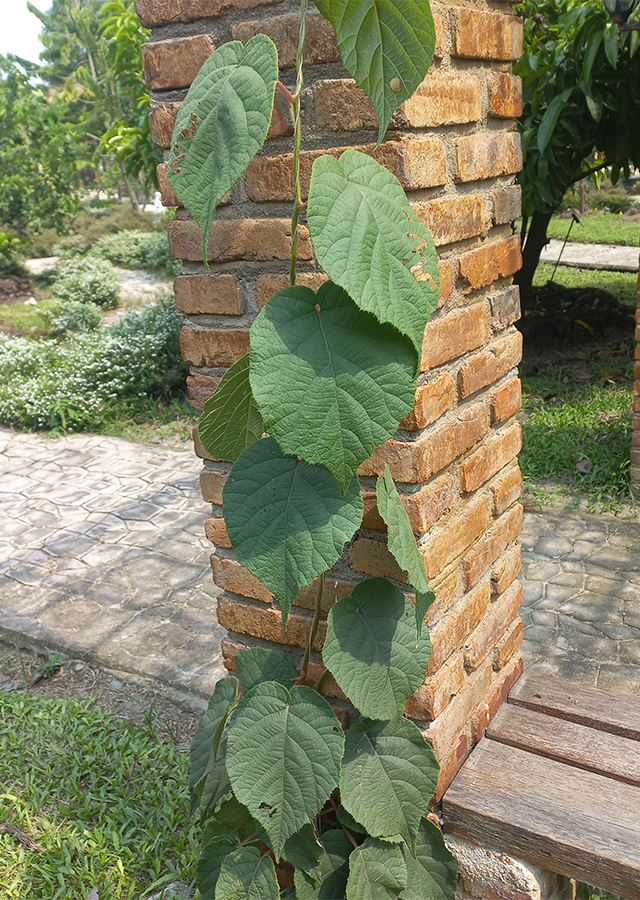Traditional Herbs from Actinidia chinensis var. deliciosa
acne
- Prepare enough kiwi fruit, wash it thoroughly, peel it and take out the flesh.
- Mash the kiwi fruit flesh and add a spoonful of lemon juice.
- Let it dry for about half an hour then rinse with warm water.
- Do it for three days. You will see the difference, the acne will decrease and the scars will fade.
reduces_dark_circles
- Take enough kiwi fruit, wash it thoroughly, peel it and take the flesh.
- Crush it until it becomes a paste.
- Pulse on eyes.
- Regular use of kiwi fruit extract on the eyes is also believed to reduce many other eye problems.\u00a0
What is Actinidia chinensis var. deliciosa Looks like??



Parts of Actinidia chinensis var. deliciosa that could be used
- Fruit
- Root
- Stem
Actinidia chinensis var. deliciosa Distribution
Actinidia deliciosa originates from China, especially in the southern and central parts, in mountain forests at altitudes of 800-1,400 m. Actinidia deliciosa is widely cultivated in many countries, including New Zealand, Brazil, Chile, and Italy. The most common cultivar in commercial production is 'Hayward'. In China, this fruit is called 'yangtao', meaning 'strawberry peach', and has been cultivated for at least 300 years (there are more than 400 varieties in China alone). Currently, Italy is the world's largest producer of kiwifruit, followed by New Zealand and Chile. This fruit is a good source of vitamin C, vitamin E and various B vitamins as well as dietary fiber. Actinidin, an enzyme found in fruit, can be used as a meat tenderizer. Research shows that kiwi fruit may be of potential benefit in preventing and stopping several processes that cause cardiovascular disease. Actinidia deliciosa is also used as an attractive ornamental plant.Agroecology of Actinidia chinensis var. deliciosa
Actinidia deliciosa is a fairly hardy plant, tolerating temperatures down to around -20 °C when fully dormant, although young growth in spring is very susceptible to damage by late frosts and can be killed back at -2 °C. Plants require a frost-free growing season of 6 - 8 months. They also require winter chilling of 600 - 1,100 hours below 7 °C and long, warm summers to ripen the fruit. Prefers healthy, acidic loam soils, dislikes alkaline soils and becomes chlorotic at a pH of 6 or higher. Tolerates pH in the range of 5.5 to 7.3. Prefers a sheltered position and does well in semi-shade but full sun is best for fruit production.
Morphology of Actinidia chinensis var. deliciosa
- Strong woody stems.
- Large leathery heart-shaped green leaves up to 25 cm long, which turn reddish in autumn.
- Flowers are creamy white to yellow, slightly scented and reach about 5 cm wide. They are produced in axils leaves in May-June and are pollinated by bees. Female plants bear fruit if pollinated.\u00a0
- The famous fruit is a brown berry, oval in shape, up to 8 cm long, covered with hairs. smooth. The edible flesh is bright green with many small black seeds.
Cultivation of Actinidia chinensis var. deliciosa
Propagation of kiwi plants is done generatively with seeds. Sprinkle kiwi seeds on seeding media in the form of loose soil or humus. Leave it for 10 days and make sure the seedlings are protected from direct sunlight. Once there are leaves on the shoots, the kiwi seeds are ready to be planted in the field.
Actinidia chinensis var. deliciosa, more details :
Chemical Content of Actinidia chinensis var. deliciosaTriterpenoids, saponins, and phenolic compounds (flavonoids, polyphenols, anthraquinones, and coumarins) vary in structure.
Benefits of Actinidia chinensis var. deliciosa
Treatment of diseases such as hepatitis, edema, rheumatoid arthritis, stomach cancer, asthma, healing acute burns, treating acne and dark eye circles, breast cancer, liver and esophageal cancer, and removing stones in the urinary tract. Fruits, roots and stems have diuretic, pyretic and sedative properties. Has antitumor, antioxidant, anti-inflammatory, immunoregulatory, hypolipemic, antidiabetic and cardiovascular protective activities.
Simplisia of Actinidia chinensis var. deliciosa
Another Facts for Actinidia chinensis var. deliciosa :
Synonym of Actinidia chinensis var. deliciosaActinidia chinensis� f.� chlorocarpa� C.F.Liang, Actinidia chinensis� var.� hispida� C.F.Liang, Actinidia chinensis� f.� longipila� C.F.Liang & R.Z.Wang
Habitus of Actinidia chinensis var. deliciosa
Creepers. Woody climbing plant, annual, 4-9 m high
Habitat of Actinidia chinensis var. deliciosa
- Forest
- Mountains
No comments:
Post a Comment